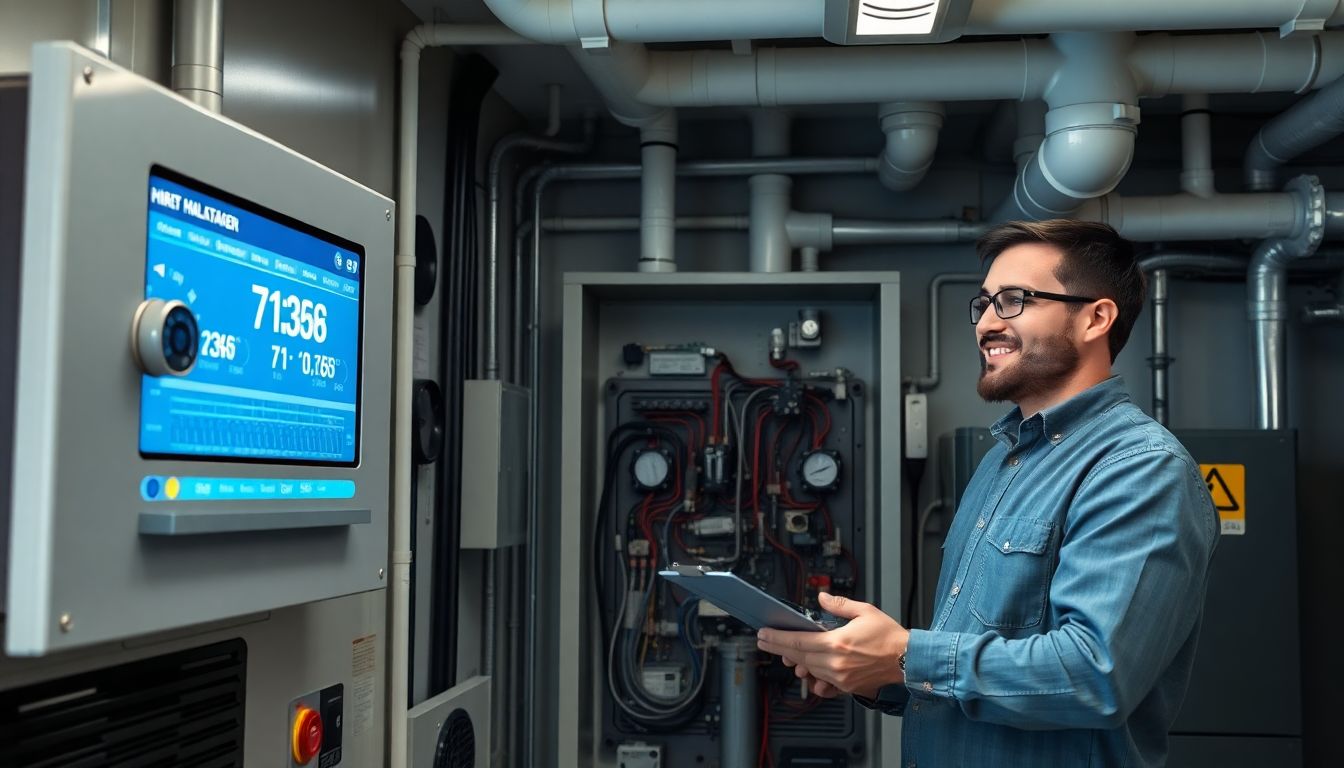When Texas summer highs climb above 100°F, a functioning air conditioner isn’t a luxury—it’s a requirement. But for most homeowners, the HVAC system that cools their family in summer and heats them in winter is a black box until something breaks.
At Texas Air Tech, we think the more you know about your HVAC system, the better you can take care of it. With a little know-how, you can save money, boost efficiency, and feel in control when it’s time to call in the experts.
How Does an HVAC System Work?
Although HVAC systems look intricate, the major parts are straightforward. Your residence’s system consists of four major pieces that function together year-round to manage temperature and air quality:
1. Thermostat – The Command Center
This is the operation brain. Your thermostat keeps track of indoor temperatures and instructs the system to heat or cool accordingly. Smart thermostats learn your routines and make adjustments automatically for optimum comfort and energy efficiency.
2. Furnace – The Heat Source
The furnace heats the home during colder months. Usually found in a basement, attic, or utility closet, it heats air and circulates it through your home’s ductwork when it gets cold.
3. Air Conditioner – The Cooling Unit
Your AC unit is installed outdoors. It takes heat and moisture out of indoor air when it is summer. It uses refrigerant to draw heat out and dispel it outside so that your home is cooler and comfortable.
4. Ductwork & Vents – The Distribution System
Ducts transport warm or cold air from your HVAC system to each room, and vents exhale that air into your home. When clean and in balance, they help maintain even temperatures throughout your home.
Why Regular HVAC Maintenance Matters
Routine maintenance isn’t a nice thought—it’s mandatory. Routine maintenance can reduce your energy consumption by as much as 15%, the U.S. Department of Energy says. That translates into cheaper bills, less downtime, and a longer equipment life.
- Replace air filters every 1–3 months for airflow and indoor air quality.
- Schedule bi-annual professional tune-ups—spring before cooling season and fall before heating season.
In a maintenance visit, technicians will check the electrical parts of your system, clean the coils, check refrigerant levels, and ensure that everything is running safely and efficiently.
Watch for These HVAC Warning Signs
Before a catastrophic breakdown occurs, your HVAC system will usually give signs that something is amiss. Watch for these warning signs:
- Strange sounds such as grinding, banging, or squealing
- Irregular temperatures or inadequate airflow in various rooms
- Sudden spikes in energy bills without higher usage
- Strong odors or continuous cycling on and off
Early detection of these problems can save you expensive repairs later.
How to Select the Right HVAC Technician
When you require service, selecting the right HVAC provider makes all the difference. Look for:
- Correct licensure and insurance
- NATE-certified technicians
- Experience with your particular HVAC model
A reputable company will provide straightforward, written quotations, describe their services at length, and suggest maintenance schedules to save you money in the long run.
Take Control of Your Home Comfort
Learning about your HVAC system empowers you to make wiser decisions for your home and your finances. You can have year-round comfort with minimal interruptions with the right maintenance and a good working relationship with a solid service team.
The experts at Texas Air Tech are here to assist you in getting the best from your system. If you need maintenance, repairs, or just some answers, we’re here for it.
📞 Call us now to arrange a complete system check and ensure your comfort remains on course year-round.
